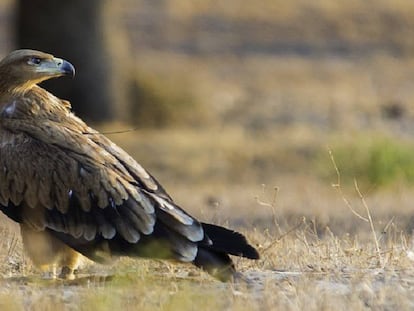From captivity to cloning: the fight to save vaquita porpoise from extinction
With less than 30 examples thought to be left, scientists eye last-ditch options to save mammal

Close to extinction, the tiny vaquita porpoise – the world’s smallest cetacean – has been thrown a lifeline with options on the table including captivity and even, as a last resort, the collection of genetic material for cryopreservation.
“It’s a desperate measure,” says Lorenzo Rojas-Bracho, president of the International Committee for the Recovery of the Vaquita (Cirva), which has put together a four-phase plan costing $4 million – including the cryopreservation option – on behalf of the Mexican government.
With fewer than 30 examples of the species thought to be left in its natural habitat in the Gulf of California, and with a fishing ban in the zone coming to an end on Wednesday, the situation is dramatic.
In October, three US navy vessels will begin an exhaustive search for vaquitas in the Gulf of California, the aim being to capture examples. It is a difficult task that has never been tried before and little is known of the behavior of the cetacean, which was only discovered in 1958. The animals are wary of human contact, staying below the ocean surface, appearing only briefly to breathe.
We never thought a population of 100 vaquitas would end up being 30 María José Villanueva , with the WWF in Mexico
It is not known how vaquitas will react to capture, and there are fears they could suffer life-threatening stress, as is the case with some related species. The operation will be carried out with surgical precision, and any animals captured will be delivered to a sanctuary the Mexican government plans to build near San Felipe in the state of Baja California. The physical condition of any captured animals will be closely monitored and the vaquitas will be released if they do not respond well, according to Cirva.
The eventual aim of the sanctuary project is to breed the animals in captivity, but as Cirva itself recognizes, “the effort of transferring several vaquitas to the sanctuary is extremely difficult and costly, and there is no guarantee of success.”
The main reason experts are pushing the Mexican government toward the capture option is the presence of illegal gill nets designed to catch totoaba fish in the Gulf of California in which vaquitas are caught and then die. Although the Mexican government placed a ban on the nets in the region two years ago, illegal fishing continues.
If experts manage to deliver porpoises to the planned sanctuary, the next step will be to clear the Gulf of California of gill nets, in what Rojas-Bracho describes as the “real act of conservation.”
The material would be transferred to the Frozen Zoo in the US city of San Diego
The current fishing ban ended on Wednesday and María José Villanueva, a project coordinator with the WWF in Mexico says it is critical that alternative fishing methods are authorized, allowing for gradual technological change in the industry.
There is a last resort: cryopreservation in the event the animal becomes extinct.
“We never thought it would come to this. We never thought a population of 100 vaquitas would end up being 30,” says Villanueva, discussing the option that would see genetic material, including reproductive cells and tissue, collected from the porpoises during the process of capture.
The material would be transferred to the Frozen Zoo in the US city of San Diego, where examples of some 10,000 animals in danger of extinction are stored at an institution that has managed to reproduce living animal tissue.
“It’s not that far off cloning – not that [cloning] is the solution for now. But we will have a genetic heritage so that at some future point, once the technology – already very advanced – has developed and once cloning is possible, we will be able to do it,” says Rojas-Bracho.
English version by George Mills.
Tu suscripción se está usando en otro dispositivo
¿Quieres añadir otro usuario a tu suscripción?
Si continúas leyendo en este dispositivo, no se podrá leer en el otro.
FlechaTu suscripción se está usando en otro dispositivo y solo puedes acceder a EL PAÍS desde un dispositivo a la vez.
Si quieres compartir tu cuenta, cambia tu suscripción a la modalidad Premium, así podrás añadir otro usuario. Cada uno accederá con su propia cuenta de email, lo que os permitirá personalizar vuestra experiencia en EL PAÍS.
¿Tienes una suscripción de empresa? Accede aquí para contratar más cuentas.
En el caso de no saber quién está usando tu cuenta, te recomendamos cambiar tu contraseña aquí.
Si decides continuar compartiendo tu cuenta, este mensaje se mostrará en tu dispositivo y en el de la otra persona que está usando tu cuenta de forma indefinida, afectando a tu experiencia de lectura. Puedes consultar aquí los términos y condiciones de la suscripción digital.
More information
Archived In
Últimas noticias
How Japan is trying to avert ‘digital defeat’
From digital curfews to blocking apps: How technology experts protect their children online
Why the price of coffee has skyrocketed: from Brazilian plantations to specialty coffee houses
Confined to a Cuban hospital: When electricity is a matter of life or death
Most viewed
- Pablo Escobar’s hippos: A serious environmental problem, 40 years on
- Reinhard Genzel, Nobel laureate in physics: ‘One-minute videos will never give you the truth’
- Why we lost the habit of sleeping in two segments and how that changed our sense of time
- Charles Dubouloz, mountaineering star, retires at 36 with a farewell tour inspired by Walter Bonatti
- The Florida Keys tourist paradise is besieged by immigration agents: ‘We’ve never seen anything like this’











































